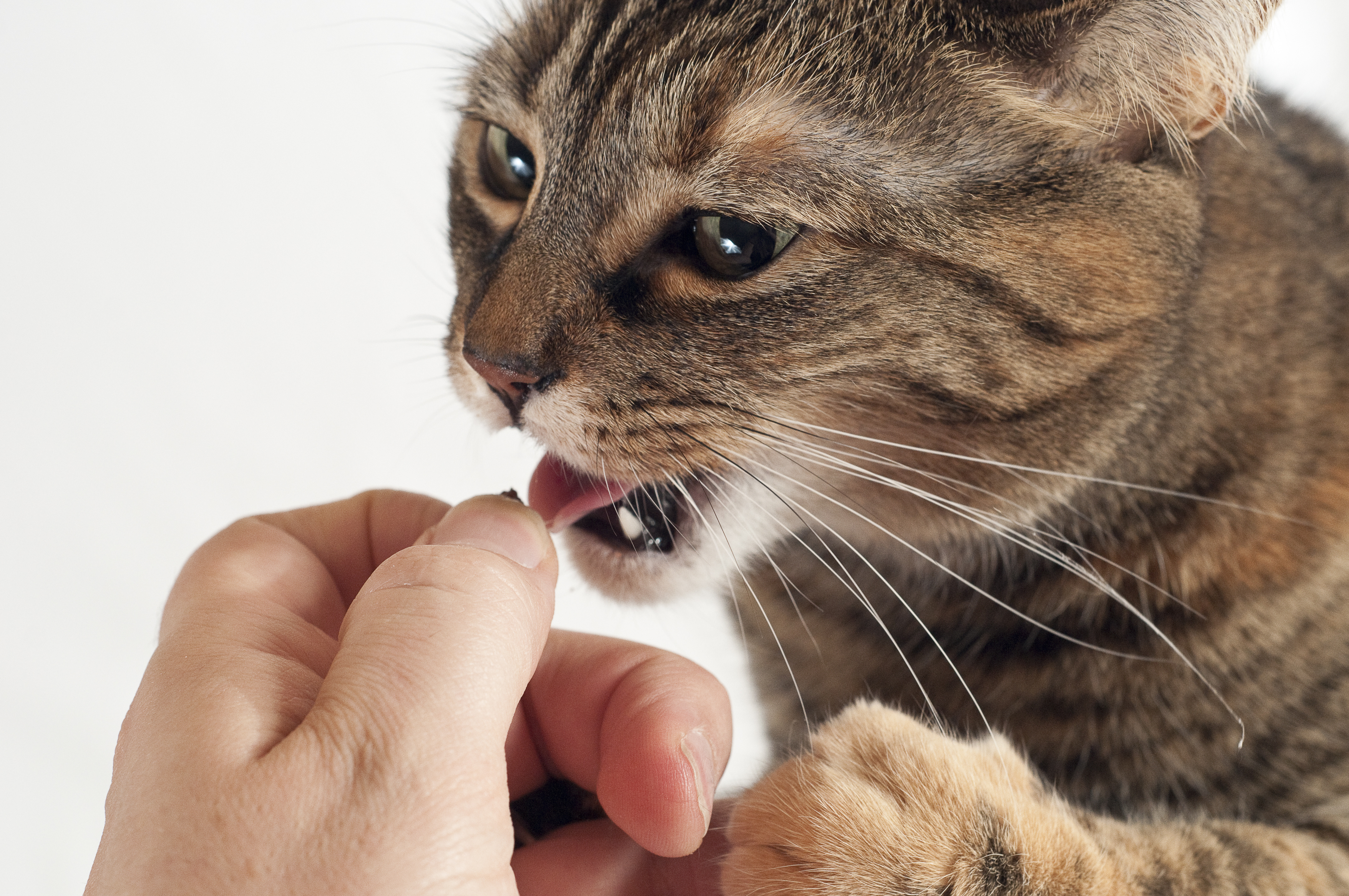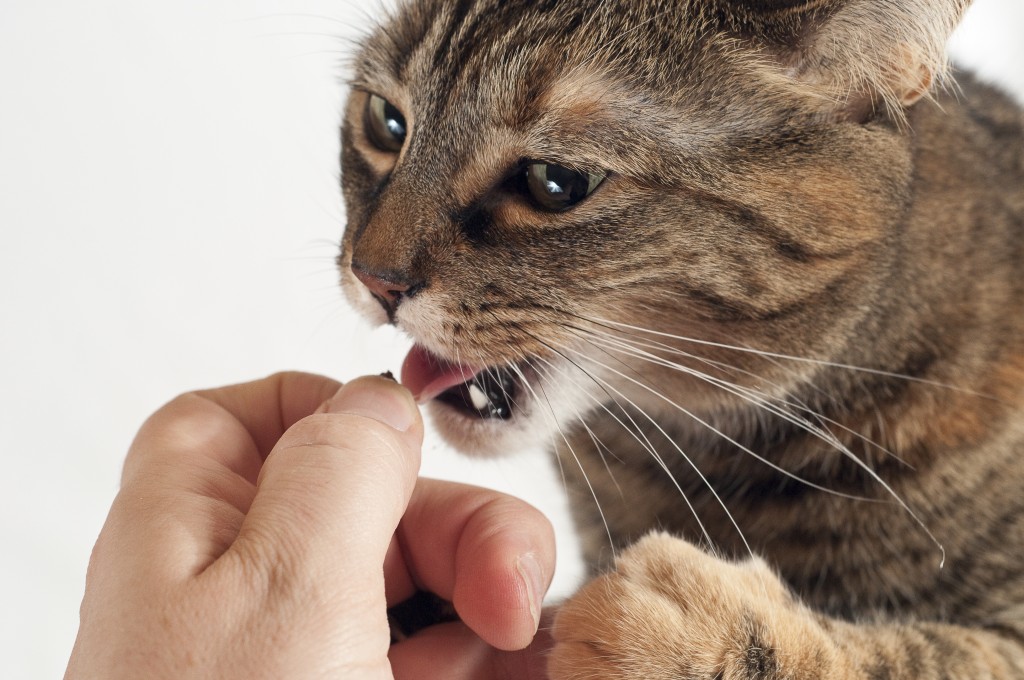
Between volunteering with a cat rescue organization and my cat behavior consulting business, I interact with A LOT of kitties during any given week. And this means that I need to have my cat-etiquette game on point – I have to know how to introduce myself to new cats and make a good impression, if I’m going to have a positive interaction with unfamiliar kitties. I’ll admit – sometimes I get complacent in implementing my cat-greeting protocol and that can be dangerous. For example, I received a nice chomp on my hand this past weekend that reminded me that I need to mind my manners with new cats! It’s still sore, and cat bites, if not attended to properly, can become easily infected and require professional treatment. So would you like a refresher on how to meet a cat?
You might be thinking, “I already have a cat…when do I meet new cats that I need to be careful about?” Well, if you’re anything like me, when you go over to a friend’s house, one of the first questions you’ll ask is “do you have a cat?” or “where is your kitty?”. And because cats now outnumber dogs as the number one pet in the United States, it’s likely that you’ll encounter cats at some point! So, let’s go over a few things to ensure that you avoid hand-chomping to the maximum extent feasible:
- Pay attention to body language. The cat’s, not yours. Is the cat you want to meet crouched, ears flattened back, tail wrapped around its body tightly? You might want to give this kitty some space (similarly, avoid cats who are growling hissing, or backing away from you!). On the other hand, if the cat is confident, relaxed, has her ears and whiskers forward, this may be a good candidate to interact with. Proceed carefully!
- Talk to your new potential friend. Using a slow, soothing, calm voice can help you be less threatening to a new cat.
- Avoid direct eye contact. Some cats perceive eye contact as threatening. I usually look at the cat’s ears or nose, but you will want to be aware of what the cat’s eyes are doing. Do they suddenly dilate? Watch out! Or are you receiving slow, relaxed blinks? That’s a good sign, and you should return them (people call them love blinks, or kitty kisses).
- As much as possible, let the cat come to you. I like to sit on the floor and let the cat approach. Or, if the cat doesn’t want to move from where she is, I’ll sit a short distance away. Move slowly, and make sure that any movements you make are visible to the cat so that you can build trust.
- Let the cat meet you through scent. Scent is incredibly important for cats in determining friend or foe. If you wear glasses, try removing them and slowly offering them to the kitty so that she can sniff the piece that has been behind your ear (a nice trick I learned from Jackson Galaxy); it’s loaded with your scent, and can be less intimidating than a hand thrust into her face. If you don’t wear glasses, offer your hand slowly, coming from below, so that the cat can see what you are doing. Keep your hand far enough away so that she can sniff you by leaning forward a little bit.
- Watch the cat’s reaction. If at any point she backs away, she’s telling you she’s not interested in proceeding further (but don’t take it personally). If she moves into a relaxed position after smelling you, or comes closer to you, yay! You’re a winner! Proceed with caution, and try gently touching the cat’s forehead just above her eyes. She’ll let you know if she wants to be touched further by either pressing into your touch, or rubbing against you.
- Limit strokes to the head and neck at first. If you are lucky enough to gain preliminary approval, concentrate on gentle pets around the head and neck; this is where the cat’s “familiarity” scent glands are, and most cats enjoy this area being stroked (as opposed to down the back, base of tail, and belly – let those areas go until you are better acquainted, or avoid them altogether in the case of some cats).
- Be cautious. You’ve been given the green light and have started a nice little interaction – good job! But since you’ve just met this cat, you don’t know if she has any triggers that might cause her to suddenly bite or scratch (i.e., if she has petting aggression). Be on the lookout for changes in body language, like a twitching tail. Be confident, but careful. Stop before she tires of your attention, and always end the interaction on a good note.
It’s rare that a cat will bite for no reason; usually, the human has done something unpleasant (intentionally or not), or has acted inconsistently with the level of trust the cat has gained, which causes the cat to react negatively. Because you don’t know what your new friend considers unpleasant, take things slowly and respect her space. If you practice these things each time you meet a cat, this procedure will become second-nature and you’ll become a popular cat-magnet!

